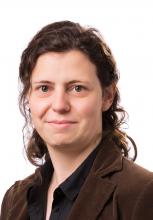Multiscale Modelling of Flame-made Nanoparticles

Περίληψη
Nanoparticles have attracted strong interest due to their novel properties and have been explored widely in photonics, electronics, catalysis, sensors, and information storage. Gas-phase methods, such as flame reactors, are used routinely for commercial synthesis of nanostructured particles (e.g. fumed silica, pigmentary titania, carbon black, Ni) as well as for advanced materials (e.g. photocatalysts, nanofluids and biomaterials). Such nanostructured commodities consist of clusters of primary particles (PPs) that are formed by chemical reactions, condensation/evaporation or surface growth and grow further by sintering and coagulation. Depending on process conditions, gas-phase synthesis typically results in aggregates (highly-sintered particles) which are attractive in catalysis, lightguide preforms and electronics and, downstream in the process in agglomerates (PPs held together by rather weak, physical forces) that are attractive in nanocomposites, pigments and liquid suspensions.
The dynamics of aerosol reactors and product nanoparticle characteristics span 10 and 15 orders of magnitude in length and time requiring different models for each scale. More specifically, Molecular Dynamics (MD) simulations are used for the accurate quantification of small (below 10 nm) nanoparticle sintering rates and crystallinity dynamics. Even though progress in particle synthesis has allowed close control of collision and sintering rates, crystallinity is controlled rather empirically in practice (e.g. by the use of dopants). Crystalline structure plays crucial role in electronics as it affects transport properties and in catalysis where high-index facets enhance catalytic activity. Furthermore, reactive MD simulations allow the determination of binding coefficient among small clusters (such as hydrogen and polycyclic aromatic hydrocarbons) required for the accurate calculation of cluster collision rates employed in mesoscale simulations of nascent soot formation.
Mesoscale models provide the transport properties (diffusion, settling rates, etc.) and interaction (coagulation rate) of multi-particle structures. Discrete Element Modeling is used to track the detailed structure and size distribution of fractal-like agglomerates. Easy-to-use relations are derived and validated with experiments that can be readily interfaced with population balance equations models, climate dynamics, meteorological models or computational fluid dynamics describing the reactor operation and particle production.
Interfacing the above models can facilitate the understanding and design of aerosol reactors for synthesis of nanoparticles whose properties can be closely controlled during scale-up from laboratory scale to commercial products. This systematic approach to study particle formation can offer significant insight into fundamental physical principles and mechanisms that may be exploited by chemical industry and nanotechnology.
Σύντομο Βιογραφικό Ομιλητή
Η Ειρήνη Γουδέλη είναι Λέκτορας στο Τμήμα Χημικών Μηχανικών του Πανεπιστημίου της Μελβούρνης στην Αυστραλία. Σπούδασε στο Τμήμα Χημικών Μηχανικών του Πανεπιστημίου Πατρών και συνέχισε τις σπουδές της στο Ελβετικό Ομοσπονδιακό Ινστιτούτο Τεχνολογίας (ΕΤΗ) της Ζυρίχης, όπου απέκτησε το Διδακτορικό της το 2016. Η έρευνά της επικεντρώνεται στην σύνθεση νανοσωματιδίων σε φλόγα και στην προσομοίωση νανοσωματιδίων σε πολλαπλές κλίμακες μεγέθους-χρόνου. Η έρευνά της έχει αναγνωριστεί και βραβευθεί με βραβεία, όπως το Εναρκτήριο Βραβείο για Εξαιρετικό Διδακτορικό στην Επιστήμη των Aerosol από τον Σύλλογο Έρευνας των Aerosols (Association of Aerosol Research) και το βραβείο έρευνας Selby από το Αυστραλιανό Ίδρυμα Ερυνών Selby.